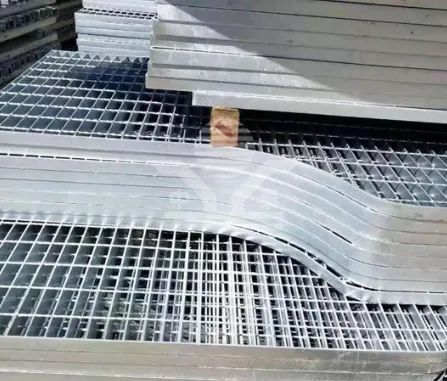The Concept and Applications of Mezzanine Grating
Mezzanine grating, a structural and architectural element, plays a significant role in enhancing spatial efficiency and aesthetic appeal in various environments. The term mezzanine refers to an intermediate floor or platform that is typically built between the ground floor and the main upper floors of a building. When combined with grating, a material that allows light and air to pass through while providing support, it creates a unique solution for both functional and decorative purposes.
Understanding Mezzanine Grating
At its core, mezzanine grating consists of a framework, often fashioned from metal or wood, designed in such a way that it provides strength while minimizing weight. The grating itself can be made of many materials, including fiberglass, steel, and aluminum, depending on the intended use and load requirements. This type of system is particularly advantageous in industrial and commercial settings where maximizing vertical space is essential.
One of the primary benefits of mezzanine grating is its ability to facilitate airflow and light penetration. In warehouses or factories, where large machines and stored goods occupy significant floor space, grating allows natural light to illuminate lower areas, reducing the need for artificial lighting. Additionally, its open structure helps promote ventilation, which is crucial for maintaining safe and comfortable working conditions, especially in environments where fumes or heat are a concern.
Applications of Mezzanine Grating
Mezzanine grating can be utilized across various sectors, including retail, warehouses, and offices. In retail environments, mezzanine floors create additional space for inventory or display areas without expanding the building’s footprint. This innovative use of space can significantly increase a store’s profitability while also enhancing the shopping experience for customers.
mezzanine grating

In industrial settings, mezzanine grating is often used to create platforms for equipment, storage, or workspaces
. This raised platform system can be designed to support heavy machinery or loads, ensuring safety and stability. The incorporation of safety features such as guardrails further enhances the functionality of the space.Moreover, the versatility of mezzanine grating extends to aesthetic applications in architecture. Architects and designers often use grating as a design feature in commercial buildings to create visually striking elements. Open grating allows for unique lighting designs and can be used to create an airy, open ambiance rather than a closed-off feel typical of solid flooring.
Design Considerations
When incorporating mezzanine grating into a design, several factors must be considered. Load capacity is paramount; the grating must be able to withstand the intended weight, which may include people, equipment, or stored items. Additionally, designing for safety is crucial—features like anti-slip surfaces and adequate load-bearing support must be evaluated during the planning phase.
Furthermore, the choice of material can influence both durability and visual appeal. For instance, stainless steel grating offers resilience against corrosive environments, making it suitable for food processing or chemical industries, while wood grating may be more appropriate for retail environments focused on aesthetics.
Conclusion
In summary, mezzanine grating serves as a multifaceted solution in modern architecture, merging functionality with design. Its applications span numerous industries, offering space-saving benefits while maintaining safety and aesthetics. As construction technologies continue to advance, the potential for mezzanine grating to evolve as a versatile architectural component only increases, paving the way for innovative design and effective space utilization in the future.
-
Why Galvanized Trench Cover Steel Grating Resists Corrosion
NewsJul.10,2025
-
The Versatility and Strength of Stainless Expanded Metal Mesh
NewsJul.10,2025
-
Load Calculations in Steel Grating Platforms
NewsJul.10,2025
-
Keeping Pets and Kids Safe with Chicken Wire Deck Railing
NewsJul.10,2025
-
Hole Diameter and Pitch for Round Perforated Metal Sheets
NewsJul.10,2025
-
Aluminium Diamond Mesh in Modern Architecture
NewsJul.10,2025
Subscribe now!
Stay up to date with the latest on Fry Steeland industry news.

